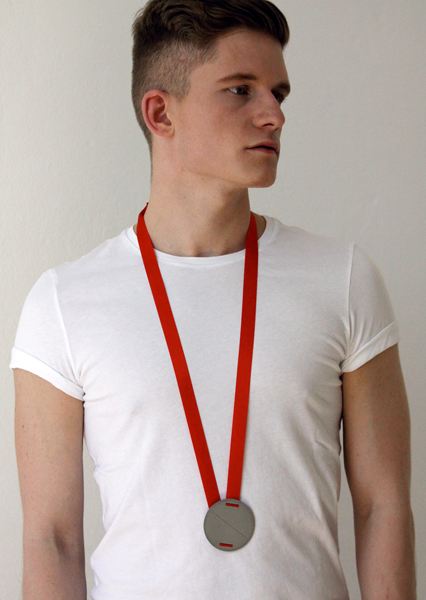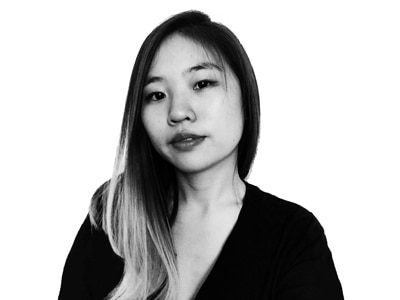
Olivia Shih: In the past, you’ve often worked with scintillating fabric chains, which shift and change with the moving wearer. What first inspired you to “fabricate” with fabric instead of with metal?
Christian Hoedl: My inspiration came from contemporary dancers, who are gorgeous and most precise in their unique techniques and are constantly developing new modes of expression. I admire their endurance and their ability to redefine postures daily.
Next is my love of fabric, which comes from early childhood experience on the north Tyrolean Alps, with high quality cotton and many different interpretations of cotton into fabric. The last generation of amazing and newly developed threads, from Europe to Japan, has given me a large number of possibilities to work with, and my eyes shine bright just thinking of this.

Olivia Shih: In the past, you’ve often worked with scintillating fabric chains, which shift and change with the moving wearer. What first inspired you to “fabricate” with fabric instead of with metal?
Christian Hoedl: My inspiration came from contemporary dancers, who are gorgeous and most precise in their unique techniques and are constantly developing new modes of expression. I admire their endurance and their ability to redefine postures daily.
Next is my love of fabric, which comes from early childhood experience on the north Tyrolean Alps, with high quality cotton and many different interpretations of cotton into fabric. The last generation of amazing and newly developed threads, from Europe to Japan, has given me a large number of possibilities to work with, and my eyes shine bright just thinking of this.
In the Unconventional Armour series, the fabric remains, but elements of protection and rigidity are introduced. What inspired the creation of Unconventional Armour? What are you protecting?
Christian Hoedl: This last series of works is connected with feelings of a wounded heart, left over from a deep relationship. These feelings, which I’m guessing everyone has experience of, are a cut and a pure line that bursts through the surface of a steel plate. Nevertheless, a red ribbon still holds both bodies together … perhaps forever?

Your work is often photographed on the human body, transforming the wearer. For example, the flat circles in your crown-like headpiece contrast starkly against the irregular contours of the model’s skull and face, restricting the wearer even as it elevates his status. Could you talk a bit about the relationship between your work and the body?
Christian Hoedl: As a purist, I’m strongly attracted to focusing my ideas on a surface, such as a male chest. The lines of the collarbones can be a starting point, and I also consider the definiteness of my jewelry through clean shapes, positions.
None of these elements are chosen by accident. I am always looking with intention, with a maximum amount of concentration flowing into questions like: How does the form develop through the wearer? What happens in the movement between the body and the jewelry? Does the jewelry communicate more than my conceptual thoughts do?

Christian Hoedl: For me, the Unconventional Armour series works best worn on the body. The images themselves should work as a communication tool.
It appears that your work is often made for men, but it is made within a field dominated by art that is designed and created for women. Was the decision to create art jewelry for men a strategic decision?
Christian Hoedl: Sure, male bodies provide multiple and attractive platforms to work on, but I’ve never done jewelry with a strategic mindset. I’m just happy that quite a few women fall in love with and wear my jewelry, too.
In this day, artwork is more often than not experienced via images, whether digital or in print. In your Backstage Puristen series, geometric fabric chains are photographed on a quickly moving body, lending your work a life of its own. Why did you choose to photograph your Unconventional Armour series in a radically different way?
Christian Hoedl: These decisions are based on a high level of awareness of what works best between the recipient and me. Here’s a secret about the Backstage Puristen images: Jan Von Holleben and I only had one clear, straight idea when we photographed them in Berlin.
The Unconventional Armour series turns the viewer around to concentrate on one’s inner face. That’s why I chose these positions.
Since graduating from the Academy of Fine Arts in Munich under Professor Otto Künzli in 2006, what kind of jewelry-related projects have you taken on?
Christian Hoedl: Solo exhibitions, selected group shows, lectures, and workshops in Europe and the United States.
Thank you.




